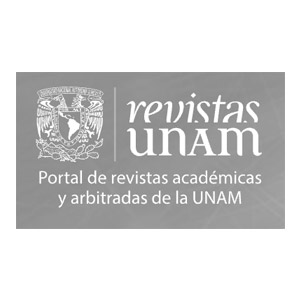
Detalles del artículo

Esta obra está bajo una licencia internacional Creative Commons Atribución-NoComercial-SinDerivadas 4.0.
Citas
Alvim, F. F. (2015). Integridade eleitoral: significado e critérios de qualificação. Ballot, 1(2), 213-228.
Beber, B., and Scacco, A. (2012). What the numbers say: a digit-based test for election fraud. Political Analysis, 20(2), 211-234.
Birch, S. (2011). Electoral malpractice. Oxford University Press.
Catt, H., Ellis, A., Maley, M., Wall, A., y Wolf, P. (2014). Electoral management design. International Institute for Democracy and Electoral Assistance.
Cox, G. W. (1997). Making votes count: strategic coordination in the world’s electoral systems. Cambridge University Press.
Deckert, J., Myagkov, M., y Ordeshook, P. C. (2011). Benford’s law and the detection of election fraud. Political Analysis, 19(3), 245-268.
Dlugosz, S., y Müller-Funk, U. (2009). The value of the last digit: Statistical fraud detection with digit analysis. Advances in Data Analysis and Classification, 3(3), 281-300.
Enikolopov, R., Korovkin, V., Petrova, M., Sonin, K., y Zakharov, A. (2013). Field experiment estimate of electoral fraud in Russian parliamentary elections. Proceedings of the National Academy of Sciences, 110(2), 448-452.
Estak, M., Nevitte, N., y Cowan, G. (2002). The quick count and election observation: an NDI handbook for civic organizations and political parties. National Democratic Institute for International Affairs (NDI). https://www.ndi.org/sites/default/files/1417_elect_quickcounthdbk_0.pdf
Figueiredo Filho, D., Silva, L., y Carvalho, E. (2022). The forensics of fraud: evidence from the 2018 Brazilian presidential election. Forensic Science International: Synergy, 5, 100286, 1-8. https://doi.org/10.1016/j.fsisyn.2022.100286
Fortin-Rittberger, J., Harfst, P., y Dingler, S. C. (2017). The costs of electoral fraud: establishing the link between electoral integrity, winning an election, and satisfaction with democracy. Journal of Elections, Public Opinion, and Parties, 27(3), 350-368.
Hicken, A. y Mebane Jr, W. R. (2015). A guide to election forensics. University of Michigan.
James, T. S., y Clark, A. (2020). Electoral integrity, voter fraud, and voter ID in polling stations: lessons from English local elections. Policy Studies, 41(2-3), 190-209.
Lehoucq, F. (2003). Electoral fraud: causes, types, and consequences. Annual Review of Political Science, 6, 233-256.
Levin, I., y Alvarez, R. M. (2012). Introduction to the virtual issue: election fraud and electoral integrity. Political Analysis, 20(V4), 1-7.
Lijphart, A. (1994). Democracies: forms, performance, and constitutional engineering. European Journal of Political Research, 25(1), 1–17.
Long, J. D. (2023). Protecting electoral integrity in emerging democracies. En T. Madon, A. J. Gadgil, R. Anderson, L. Casaburi, K. Lee, y A. Rezaee (Eds.), Introduction to development engineering; a framework with applications from the field (pp. 489-512). Springer.
López-Pintor, R. (2000). Electoral management bodies as institutions of governance. Bureau for Development Policy; United Nations Development Programme.
Mack, V., y Stoetzer, L. F. (2019). Election fraud, digit tests and how humans fabricate vote counts; an experimental approach. Electoral Studies, 58, 31-47.
Marchetti, V. (2008). Governança eleitoral: O modelo brasileiro de justiça eleitoral. Dados, 51, 865-893.
Mulyadi, D., y Aridhayandi, M. R. (2020). The existence of a quick count in the simultaneous election vortex as part of the development Indonesian democracy in the 4.0 era. Journal of Legal, Ethical and Regulatory Issues, 23, 1-5.
Nogueira, A. J. A. (2021). A Revolução de 1930 e a criação do eleitorado brasileiro. Revista Direito Eleitoral em Debate. https://www.researchgate.net/publication/355189536_A_Revolucao_de_1930_e_a_criacao_do_eleitorado_brasileiro
Nogueira, A. J. A. (2022). Elections results: Brazil (Alagoas). [Data set]. Mendeley Data. https://data.mendeley.com/drafts/rd5j4k4bhp
Nogueira, A. J. A. (2023), Apocryphal document on fraud in Brazilian electronic voting machines. Mendeley Data, V1. doi: 10.17632/6gpkwpvzdn.1
Norris, P., Frank, R. W., y Coma, F. M. i (2014). Measuring electoral integrity around the world: A new dataset. PS: Political Science and Politics, 47(4), 789-798.
Norris, P. (2015). Why elections fail. Cambridge University Press.
Pastor, R. A. (1999). The role of electoral administration in democratic transitions: implications for policy and research. Democratization, 6(4), 1-27.
Popper, K. (2018). Conjecturas e refutações. Edições 70.
Pusdiklatwas, B. P. K. P. (2019). Reviewing Presidential Candidates and Political Parties Reactions on The Results Of 2019 General Election Quick Count.
Skovoroda, R., y Lankina, T. (2017). Fabricating votes for Putin: new tests of fraud and electoral manipulations from Russia. Post-Soviet Affairs, 33, 100-123.
Taagepera, R., y Shugart, M. S. (1989). Designing electoral systems. Electoral Studies, 8(1), 49-58.
Tribunal Superior Eleitoral (TSE) (2022). Portal de dados abertos do TSE. Recuperado de https://dadosabertos.tse.jus.br/
Van Ham, C. (2015). Getting elections right? Measuring electoral integrity. Democratization, 22(4), 714-737.
Van Ham, C., y Garnett, H. A. (2019). Building impartial electoral management? Institutional design, independence, and electoral integrity. International Political Science Review, 40(3), 313-334.
Wall, A., Ellis, A., Ayoub, A., Dundas, C. W., Rukambe, J., y Staino, S. (2006). Electoral management design. International Institute for Democracy and Electoral Assistance.
Williams, J., y Curiel, J. (2020). Analysis of the quick count in the 2019 Bolivia election. Center for Economic and Policy Research.
Wibowo, A., y Darmanto, S. (2019). Impact of quick count result of president election on stock prices and trade activities in the Indonesian capital market. Saudi Journal of Business and Management Studies, 4(6), 487-493.



















